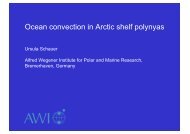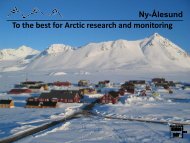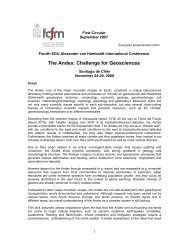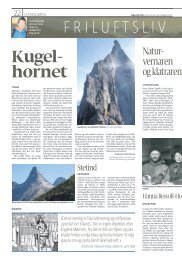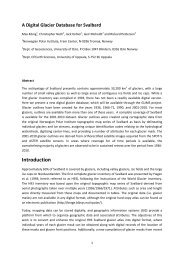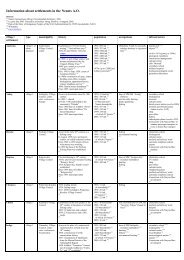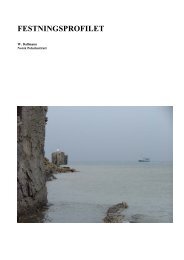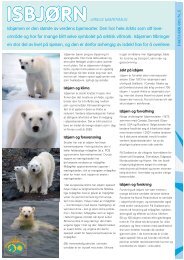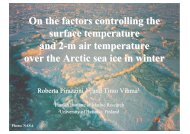PDF, 5.8 MB - Arctic Climate System Study
PDF, 5.8 MB - Arctic Climate System Study
PDF, 5.8 MB - Arctic Climate System Study
Create successful ePaper yourself
Turn your PDF publications into a flip-book with our unique Google optimized e-Paper software.
Recent Advances in our<br />
Understanding of Polar Lows<br />
John Turner<br />
British Antarctic Survey<br />
Cambridge, UK
Outline<br />
• The polar low spectrum<br />
• Occurrence<br />
• Modelling studies<br />
• The possible climatological importance<br />
of polar lows<br />
• Future research needs
The Nature of Polar Lows<br />
• Occur poleward of the Polar Front<br />
• Mesoscale
Reverse Shear Polar Lows
The Boundary Layer Front<br />
Type of Polar Low
A Cold Core Vortex Polar Low<br />
Over the Labrador Sea
Woetman Nielsen’s Case ‘P’ 13-16 October 1993<br />
Image taken at 13:49 GMT 14 October<br />
1993<br />
Norway
A 48 h forecast of<br />
MSLP and 10 m wind<br />
vectors using the<br />
Danish HIRLAM<br />
model.<br />
Data time 00 14 Oct 93<br />
Verifying 00 16 Oct 93
Surface analysis at 00<br />
GMT 16 October 1993
Possible Climatological Importance<br />
• Individual polar lows can have fluxes of heat<br />
of up to 1,000 Wm**2<br />
• The loss of heat from the ocean could<br />
trigger downward convection in the ocean<br />
• But the frequent occurrence of polar lows<br />
would be needed in an area for this to be<br />
of climatological importance<br />
• Modelling studies are needed to assess<br />
their importance
Future Research Needs<br />
• Little published on systems over the Chuckchi and<br />
Kara Seas<br />
• Climatological occurrence still poorly understood.<br />
Could be addressed by studies with high<br />
resolution analyses or satellite imagery<br />
• Still debate over how convection acts to intensify<br />
the lows – CISK, WISHE<br />
• Greatest insight into polar lows can be obtained<br />
from high resolution model runs, which can also<br />
contribute to forecasting of the lows




